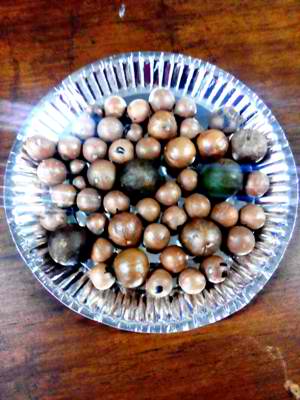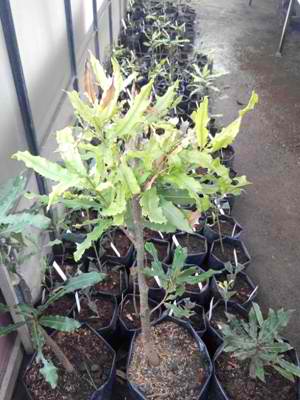The Department of Agriculture-Bureau of Agricultural Research (DA-BAR) and the DA-Bureau of Plant Industry-Baguio National Crop Research Development and Production Support Center (BPI-BNCRDPSC) are working together on a research and development project that will help develop and promote the commercial production of macadamia in Luzon.

The project, “Macadamia Conservation, Propagation and Commercialization in Luzon,” targets to increase local macadamia production; improve farming systems and biodiversity through the integration of macadamia production; and make available quality macadamia seedlings. In achieving these, the project will characterize, evaluate, and conserve existing macadamia trees in Luzon; develop appropriate propagation methods; develop appropriate nursery management technologies; produce quality planting materials; and promote production through the establishment of a demonstration orchard and the dissemination of information materials.
The project has verified the adaptability of the macadamia tree to Baguio City conditions, taking into consideration the macadamia trees in the experimental station that have matured. At the BPI-Baguio experimental station, there are eight fully-grown macadamia trees that are about 15 years old and are already fruiting all year round. The trees show good promise of locally-grown macadamia for commercial production. Macadamia has the potential for commercial production, either as a cash crop or as a component of agroforestry systems. The introduction of macadamia into the existing production systems will enhance food production and biodiversity and industry development from its products and by-products.

On-going verification trials on germination, grafting techniques, and use of cuttings for propagation are being done in the experimental station. Researchers are experimenting on several nursery management technologies using different potting media and soil additives. About 500 cuttings that were set under intermittent mist are now in the callous stage which will eventually produce roots. A total of 150 seedlings were asexually propagated and are being maintained through regular watering, fertilizer application, and pest and disease management.
The existing trees in the station are being maintained as sources of scions for grafting of seedlings and cuttings for propagation. The harvested nuts are used for seedling production. The researchers pointed out that, for the target of 1,500 quality planting materials of macadamia, a total of 1,007 seedlings (seedlings, grafted plants, and cuttings) have already been produced. Majority are seedlings which will still be grafted. Grafting is performed whenever there are seedlings available and scion branches are ready for use in propagation. In addition, 437 macadamia nuts that were sown are now starting to germinate. The harvesting of macadamia nuts is continuously being done since the existing macadamia trees are bearing continuously.
Based on the investment analysis prepared by the project proponent for a one-hectare macadamia orchard, assuming that the initial capital is Php 205,000, positive returns could be realized in the 6th year with projected gross margin of Php 591,800 from the 10th year onwards, or a return on investment of 200 percent.
Considering further that macadamia production has a relatively low input requirement, it could be promoted as a cash crop for small farmers, and a potential crop in areas with inadequate irrigation systems or rainfall due to its relative tolerance to drought. In fact, macadamia plantings were also reported in Ilocos region which is a relatively dry area.
The project on macadamia conservation, propagation, and commercialization in Luzon is funded and supported under the National Technology Commercialization Program of DA-BAR. ### (Patrick Raymund A. Lesaca, DA-BAR)
For more information, please contact: Dr. Juliet M. Ochasan Project Leader BPI-BNCRDPSC Guisad, Baguio City Tel. Nos.: (074) 445-9084/300-3584 Email Add.: [email protected]
